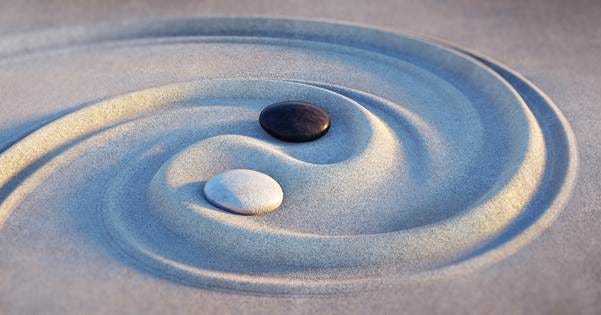
We live in a time where distractions abound and multitasking is often celebrated. How many times do we feel that achieving a state of deep focus and immersion is like a rare gift?
Well, this state is today termed as Flow. It’s a mental state when we are entirely engaged with an activity and perform at our best while feeling great satisfaction. Sounds perfect, isn't it?
The term flow was first used by psychologist Mihaly Csikszentmihalyi. Flow represents an optimal experience that transcends cultures and eras, while it is resonating with ancient philosophies that have long sought to understand human flourishing.
In this article, I will briefly examine the fundamentals of Flow, relate them back to historical ideas, and provide practical methods on how we can apply Flow within everyday life.
Core Principles of Flow

Flow is a mental state where we achieve complete engagement in an activity, so immersed that external distractions fade away.
Research by Csikszentmihalyi, detailed in his seminal work Flow: The Psychology of Optimal Experience, identifies several key principles that define this state.
Complete Absorption: One is completely absorbed and has no awareness of time.
Challenge-Skill Balance: The activity is challenging enough to draw on skills but not so challenging that anxiety results.
Specific and Immediate Goals and Feedback: The exercise has clear goals and gives immediate feedback on achievement.
Sense of Control: One experiences a sense of mastery and control over the task even though it is challenging.
Intrinsic Motivation: The work is intrinsically rewarding, driven from an inner sense of satisfaction and not from extrinsic reward.
Altered Sense of Time: Time perception shifts, often feeling accelerated or slowed during the activity.
It produces a condition by which we can accomplish spectacular outcomes. For example, research by McKinsey indicates that productivity can rise by as much as 500% when we're in Flow. Just consider its possible transformations within work and creative projects!
Historical Parallels to Flow

While Flow is a modern psychological concept, its essence is reflected in ancient philosophies that emphasize harmonious engagement and flourishing. These parallels demonstrate that the pursuit of optimal experience is not something new, but a timeless human endeavour. So, let’s explore a few ancient philosophies talking about Flow in ancient terms.
Taoism: Wu Wei and Effortless Action
In Taoist thought, wu wei, commonly translated as "non-action" or "effortless action," is also remarkably similar to Flow. Wu wei is acting naturally in accord with the natural order, or the Tao, without strained effort. The Daoist thinker Zhuangzi exemplifies it through anecdotes about craftsmen, for example a butcher who slices meat with such finesse that his knife does not get dull, experiencing a state of fluid mastery.
This effortless engagement, where one becomes the act itself, mirrors Flow’s state of complete absorption and intrinsic motivation.
Stoicism: A Good Flow of Life
Stoicism describes happiness (eudaimonia) as a "good flow of life," as Zeno, founder of Stoicism put it. It entails living in accordance with nature and reason, attending to what lies within one’s power, and cultivating virtue in everything. The Stoic sage actively busied in virtuous acts finds himself in a state of concentration and peacefulness similar to Flow such that distractions from without are reduced and the present is supreme.
Greek Eudaimonia: Flourishing Through Virtue
The broader Greek concept of eudaimonia or flourishing and living well lies at the heart of Aristotelian ethics and reaches through to Stoicism. Aristotle himself was convinced that eudaimonia is achieved through cultivating virtues and excelling at activities that bring out the best in people. Doing difficult tasks that are directed toward one’s talents and values can trigger Flow-like states where people are concentrated and acting at their best.
This overlap suggests that Flow is a pathway toward eudaimonia because both involve strong involvement and realization of self.
Key Parallels
One can even today witness analogies between Flow and these older ideas.
Taoism articulates the idea of Wu Wei, and it is synonymous with effortless action, complete absorption, and harmony with environment or work.
In Stoicism, that view conforms with what constituted a "good flow of life", namely living by reason, remaining concentrated on the present moment, and internal calm.
Ancient Greek philosophy, particularly through the concept of Eudaimonia, emphasized flourishing by engaging in virtuous and skilful activities that promote deep immersion and personal growth.
These parallels reveal that Flow is no new finding but a contemporary description of a perennial human experience.
Practical Application of Flow

The question is how can we find Flow within our daily life, work, or creativity?
Apparently, we require deliberate methods to set proper circumstances and thereby conjure this mind state. Based on private experience and also on Csikszentmihalyi's own work, these are some methods that can help you induce Flow:
Continuous Single-minded Devotion
Commit whole-heartedly to a single broad endeavour that aligns with long-term goals. Conduct a "temporal audit" by envisioning yourself decades forward and distinguishing between what's indeed worth giving attention. This judgment, supported by neuroscience, recruits the salience network of the brain and concentrates on high-importance goals and Flow.
Remove Distractions
Modern technology, particularly smartphones, can derail Flow by grabbing our attention. To counteract this, fortify your environment:
Disable all notifications and move distracting apps to a hidden folder.
Employ tools to disable social media and other distractible sites.
Put your phone out of reach during worktime and particularly during morning work hours to safeguard your concentration. These actions minimize overhead for the mind, and spotlighted attention can narrow down into Flow's "tunnel."
Optimize Your Calendar

Scheduled fragments or "calendar chokepoints" inhibit deep immersion by preventing your brain’s dorsolateral prefrontal cortex (dlPFC) from going offline and tracking upcoming tasks. How to build "immersion runway":
Batch meetings on a single day, e.g. Monday, and release consecutive days for concentrated work.
Utilize "Flow No" when declining unnecessary engagements such as social functions during work hours.
Specify specific time slots for goal-oriented work to attain maximum "struggle payoff" for reaching Flow.
Adopt Work Compression
Limiting work hours forces clarity and prioritization, fostering Flow. By reducing weekly work hours by 20-30% and setting strict boundaries, you compel yourself to focus on high-impact tasks. Research by Barthelmäs and Keller shows that perceived task importance enhances attention and Flow.
Stick Through Plateaus
Flow often follows a cycle of struggle, release, flow, and recovery. Plateaus, where progress feels slow, can tempt you to switch tasks. Instead, persist by increasing the challenge within your pursuit. For instance, find hobbies like chess or sports to satisfy the need for novelty, preserving focus on your primary goal. This persistence allows breakthroughs that rekindle Flow.
Balance with Recovery and Hobbies
Recovery is essential for sustained Flow. Chronic multitasking or lack of rest elevates cortisol, blocking Flow. Engage in activities outside work, such as art or physical exercise, that also induce Flow, ensuring a balanced nervous system and sharper focus.
Conclusion

We should now be able to understand that Flow is an evolving state of being which brings peak performance and deep fulfilment, bridging contemporary psychology with eternal wisdom. By understanding its defining principles (complete absorption, an optimal balance of challenge and capability, and internal motivation) and recognizing its cross-links with Taoist wu wei, Stoic "good flow of life," and Greek eudaimonia, we can understand its timeless appeal.
Practical strategies, such as focus on a single activity, elimination of distractions, scheduling optimization, acceptance of time constraints, persistence with setbacks, and matching effort with recovery, help us to cultivate Flow in our life. By doing so, not only do we increase productivity but also move towards an enriching, satisfying life.
Aren't we all seeking this in life?


I think this is comprehensive, containing the big picture.